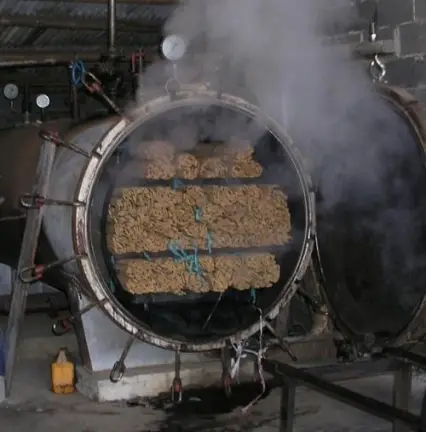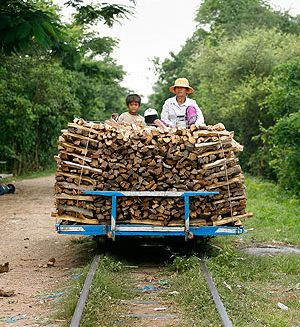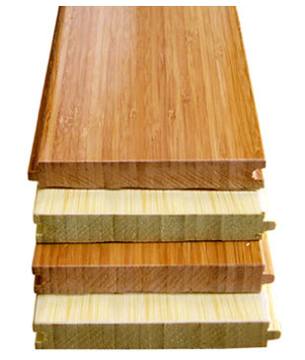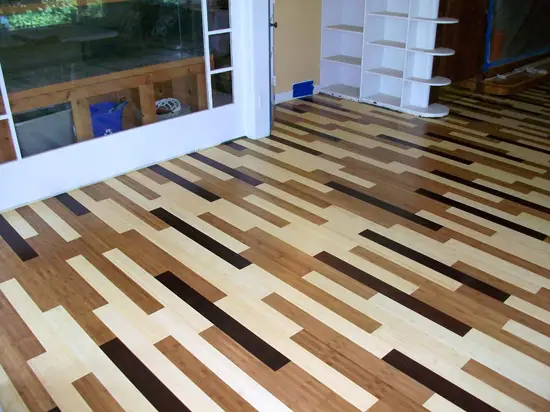
In one of our previous posts, we looked at some of the possible disadvantages of buying so-labeled green flooring products. Here, we take on some things we think you should know before deciding if you want and need bamboo on your living or working space and if it is indeed the appropriate material.
Bamboo Flooring in the Making
Two things everyone should consider before buying bamboo flooring because they are thinking green are these: producing bamboo flooring takes major chemical and energy inputs.

What chemical and energy inputs?
From its natural state, it takes a series of energy-consuming processes to convert bamboo into flooring boards:
- shoots are sliced into strips;
- strips are boiled with a solution of water and Boric acid to remove starch and sugars;
- to add some color to bamboo flooring, it undergoes a carbonizing process through steaming under controlled heat and pressure;
- bamboo flooring products will then undergo a laminating process to create solid boards and added with chemical adhesives like urea-formaldehyde (a reported carcinogen);
- these bamboo boards are then cut into standard flooring planks w/ their tongues and grooves and finished with chemicals to protect the top layers;
- before it is shipped or transported for distribution to local markets.

If you think of all that, you say to yourself: then its not really “green” after all. However, we are not saying that all bamboo flooring manufacturers are irresponsible and is not concerned with the welfare of the environment, we are advocating that we check out who are we buying from and how the products we’re buying from them are made. Buying from people engaged in unsound practices means we are supporting the ways they might be damaging the environment and risking our families or friends in the process.

5 Important Bamboo Facts Every Consumer Should Know:
- Bamboo expands…in length.
Hardwood which normally expands in width, hence flooring installers normally leave spaces on the side of each board to make room for expansion. Sometimes however, bamboo expands in length. Consumers should be advised to be mindful of this to prevent the ends of their bamboo flooring from buckling or warping.
- Hardness matters.
While bamboo ranks relatively high in the Janka Hardness scale, keep in mind that the flooring material is made for different bamboos pressed together so how it ranks in the scale may vary or may even be inaccurate. Another think to keep in mind is that carbonizing leaves bamboo flooring products softer than untreated ones.
- Reactions to humidity.
Moisture changes causes bamboo to react differently: fibers on each strip will naturally expand or shrink away from each other unlike in engineered hardwood where fibers are held together by plywood as its stabilizing layer. This behaviour of fibers in bamboo flooring can cause the wear layer to crack.
- It doesn’t automatically add up in LEED.
Just because you chose bamboo, it doesn’t mean that you automatically earn multiple points in the Leadership in Energy and Environmental Design (LEED) certification system. The type of bamboo flooring you use will determine how and where you can earn the credits you get.
- Acclimation is still important.
Most consumers assume that bamboo flooring doesn’t need to acclimate since it is made up of many joined fibers. Contrary to this is the fact that since bamboo is made up of different bamboo fibers, it required varying acclimation times.

Bamboo has many great benefits however not all bamboo flooring are created equal. If sellers don’t give you the complete score on the bamboo flooring product you are interested in, go the extra mile and do some research. Green bamboo flooring created in an unsustainable or environmentally degrading process isn’t exactly green flooring at all.

